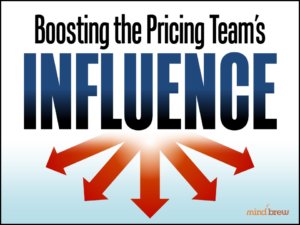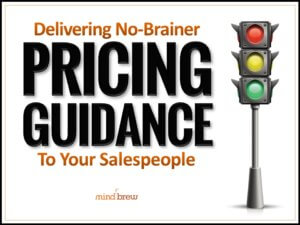See if this sounds familiar…it’s one of the most common and frustrating burdens we hear from pricing teams:
“Pricing always gets the blame but never gets the credit.”
When you think about it, pricing is often in the middle of a perfect storm. When margins take a hit or sales has trouble closing a deal, they can point their finger at pricing. But when margins are on an upward swing, it can be chalked-up to changing market conditions or heroic sales efforts.
Most seasoned pricing professionals know that management’s first inclination is often to attribute any performance gains they see to something other than pricing’s efforts. You know that their initial bias will be toward some other explanation.
And even if they don’t say it out loud, you just know they’ll be thinking it.
No, it’s not fair. But it is reality. And while it might be tempting to wallow in the inequity of the situation, the better course of action is to acknowledge the reality, anticipate the responses, and take steps to preempt them.
In the “Proving the Value of Pricing” and “Boosting the Pricing Team’s Influence” webinars, we discuss a wide range of strategies, tactics, and tips for communicating performance improvements in ways that are very difficult to dismiss, contradict, or attribute to “advantageous celestial alignments”.
For example, one effective strategy is to get in the habit of using “business as usual” (BAU) as a touchstone. By establishing a set of historical, pre-improvement metrics and trends, you can credibly illustrate what would have happened in the absence of pricing’s interventions, improvements, and optimizations.
Another effective approach involves making comparisons to holdouts or unaffected groups. By tracking and illustrating the performance differences between these “test” and “control” groups, particularly as they trend over time, you’re making it very difficult to attribute the variance to anything other than your efforts.
As discussed in the webinars, there are a variety of ways to preempt this sort of skepticism and bias. The first step, however, is to acknowledge its presence. While it may not be stated explicitly or outright, you have to recognize and anticipate that it’s going to be there, no matter what. Then you can take steps to address it—proactively, credibly, and decisively.












